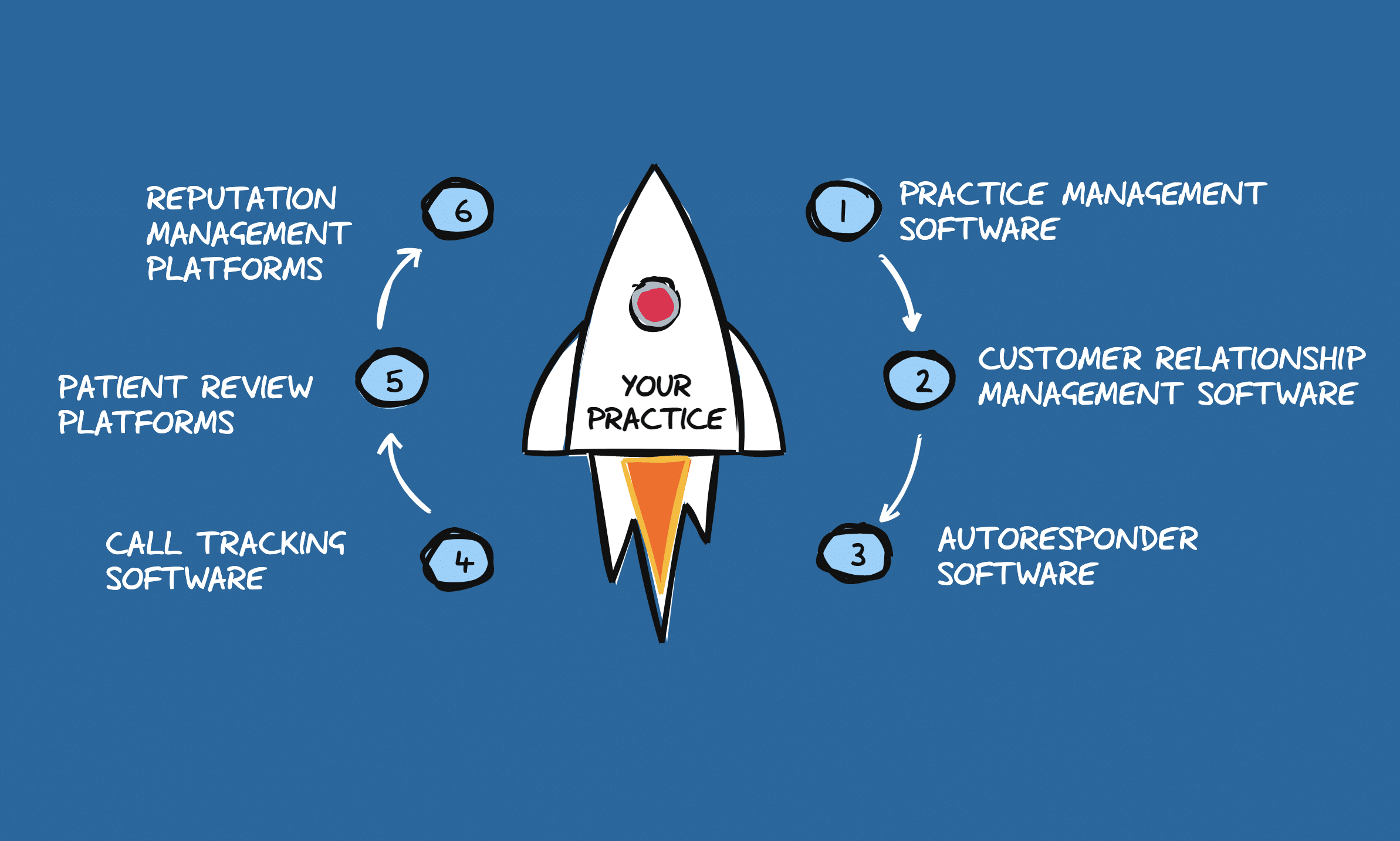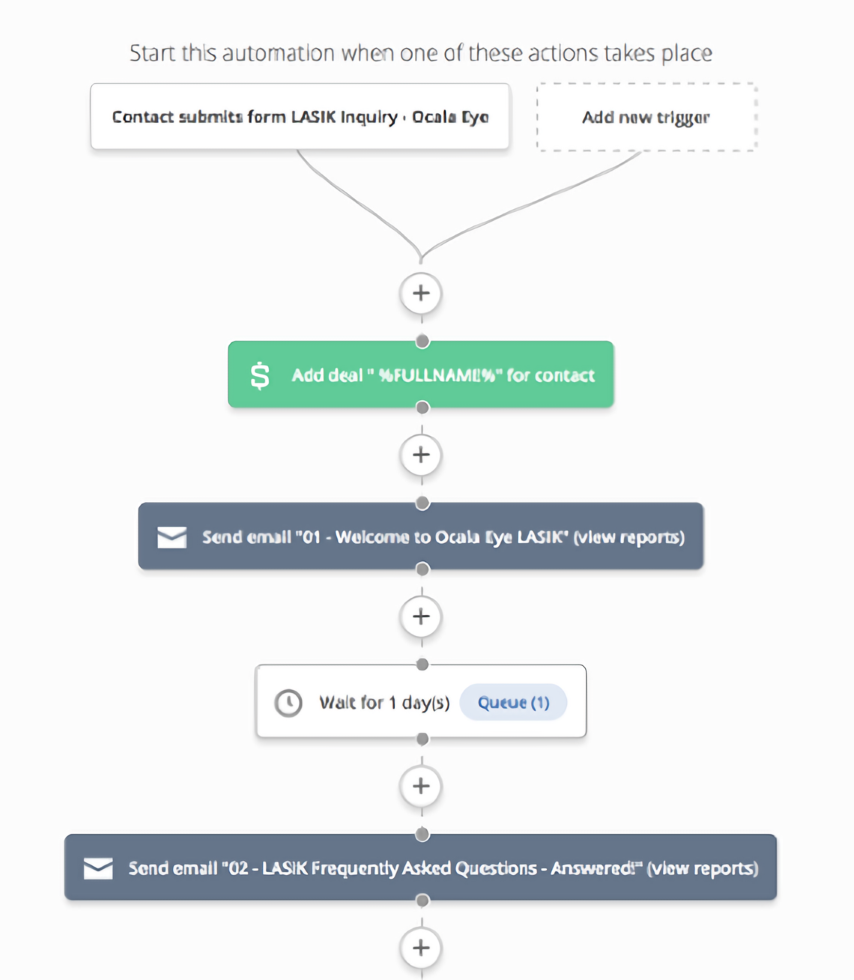The Ultimate Ophthalmic Marketing Guide
Chapter 9: Marketing Technology

Chapter 9: Marketing Technology
Marketing technology comprises a variety of (mostly) software tools and resources that enhance, automate, and scale your marketing efforts. But an in-depth discussion of marketing technology is not the purpose of this guide. An entire series of books could be dedicated to this topic alone (and no sooner would they published than they would already be out-of-date). So rather than presenting a lengthy list of product reviews of the various software systems that are available, we will instead attempt to lay down some fundamentals about the types of tools you might want to consider.
Why Use Marketing Technology?
As we have discussed in previous chapters, collecting as much customer (patient) information as possible and using that data to nurture relationships with them is a powerful way to leverage your practice development. It is well known that it takes multiple 'touches' or contacts with a prospective patient (known as a lead) before enough trust is established for them to accept an offer or a recommendation for a service or procedure. Anything that helps leverage your time and effort is advantageous.
This contact can be accomplished through as simple a system as regularly sending letters or postcards to all of your patients. (This was state-of-the-art before computers ever existed and is still successfully used today). The challenge here lies in keeping track of who responded to what offer when and in being able to generate useful data. The effectiveness of a particular campaign and the return on one’s investment can be calculated only if data is captured. And this is where technology comes in.
This is a good place to remind you that it is incumbent upon your practice to ensure personally identifiable information (PII) and personal health information (PHI) are being protected when using any kind of marketing technology. Ideally you should keep health-related communications generated from your practice management system separate from your marketing communications. And patients should have to 'opt in' to that system so you can avoid potential complaints of spam.
Types Of Marketing Systems
While there is some overlap between the capabilities of different types of marketing systems, there are broadly three main kinds:
Integrating Marketing Technology Into Your Funnels
Time does not allow us to provide a comprehensive explanation of how to set up and implement marketing technology. Moreover, since technology is always changing, the “perfect” tool today might be outdated a couple of months from now. The main takeaway of capturing and nurturing leads as you guide them through your funnels is amplified when you adopt appropriate marketing technologies. As described in previous chapters, your leads can come from your website, from word of mouth, from events, from social media, from external marketing, from referrals, etc. It is important, then, to have a way to collect them so they are not lost.
Case Study: LASIK Inquiry Lead Capture and Nurturing with Sales Pipeline
In our practice, prior to implementing the system described in this case study, prospects inquiring about LASIK that did not commit to scheduling an evaluation appointment during the phone call were often lost forever. Operators took messages and transferred callers to the refractive coordinator’s voice mailbox, but paper gets lost and callers hang up without leaving a message. Another issue was that the our refractive coordinator (the 'salesperson') tried to return the call a couple of times but then tossed out the message and moved on. This is not a reflection on her professionalism; we just never made clear our desire to keep track of attempts, nor did we give her technology to make this part of her job easier. We lost the sale because a lead does not become a patient until they are formally entered into an EMR system – and, as such, there was no place to store a lead.
After we implemented a marketing automation tool with sales follow-up modules, every single LASIK lead who calls our practice is asked a few simple questions by the call center, which enters the information into a web form. The exact wording is scripted so that even an inexperienced operator knows what to say.

LASIK inquiry web form filled out by the call center
This information is then automatically sent to the sales opportunity pipeline. All new leads are dumped into a pre-evaluation stage. The refractive coordinator calls each one to prescreen them for the appropriate evaluation (LASIK? RLE? Cataract? Not a candidate for either?) and moves them into a corresponding sales stage from there.
The value of the potential deal can also be captured. In addition, confıdence factors can be assigned to each stage to give a better idea of the expected revenue, which is called sales forecasting. For example, if you know that historically only half of your calls in convert to a procedure, the initial stage can be assigned a confıdence factor of 50%. With better revenue data, accurate lead sourcing, and knowledge of your expenses, you can begin to calculate an ROI for each of your marketing campaigns.

LASIK CRM sales pipeline stages
As soon as a lead is added to the sales pipeline, it is automatically put into an automated LASIK lead nurturing email sequence. Prospects receive a continuous drip of relevant LASIK patient education emails, from FAQs to doctor bios to what they can expect before, during, and after the procedure.

Example of email nurturing campaign automation
Following our implementation of the LASIK inquiry lead capture process and pipeline, there was a 20–25% increase in the volume of prospects screened by the refractive coordinator. This can be attributed to the fact that there was now a place to keep all leads regardless of their degree of interest, from tire kickers (suspects) to those ready to proceed with surgery (prospects), and the nurturing campaign reduced the likelihood that prospective patients would shop elsewhere.
Shouldn’t I Just Get The Best System Money Can Buy?
So, you probably don’t need a Ferrari just for driving to Safeway, right? Well, spending the most money possible for marketing technology isn’t necessarily a wise move either. And if you are just starting out with your direct response marketing strategy, it might be advisable to begin with a less complicated (and therefore less expensive) system with email capability and to add an autoresponder function later. Your contact database can usually be mi- grated into another system if you grow out of this starter platform.
Another option is to find a system that lets you start small (and inexpensively) and then add on marketing modules as you need them; then, as your list gets larger and your funnels more sophisticated, you can justify ramping up the expense.
Having said that, once you have several 'R' Strategies going, it will be preferable to integrate them more tightly with each other and with other offline media and systems such as print and USPS direct mail. In this case, a more robust marketing platform might be in order. With increased robustness, however, comes increased complexity and cost. The complexity can be handled by consultants who are certified in the specific system and can manage all of the technical issues of running the system. In addition, many younger people coming out of college marketing programs are already acquainted with these technologies.
Key Takeaways
Share this guide on your social media account with the buttons below
Next: PHYSICIAN MARKETING - LEGAL & COMPLIANCE
